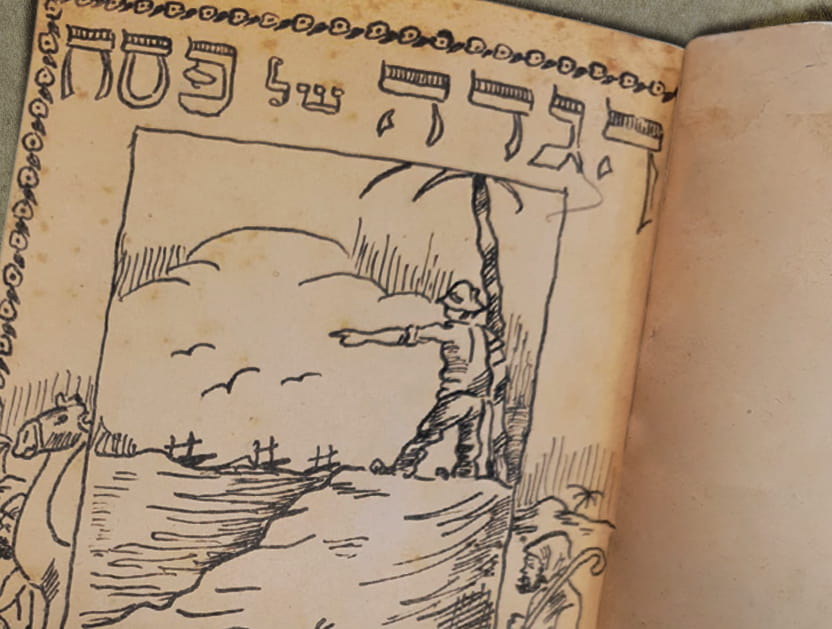הרמן בורקהארדט (1909-1857) היה מזרחן וצלם יהודי-גרמני, שטייל רבות בחצי האי ערב, בעיקר בתימן, ותיעד בצילומיו את חיי יהודי תימן. הארכיון שלו כולל מסמכים אישיים, כתבי יד בערבית ובפרסית, הרצאות, רישומים ויומנים על מסעותיו למזרח ותצלומים רבים. הספרייה הלאומית מחזיקה בחלק מארכיון התצלומים של בורקהארדט, הכולל יומנים עם רשימות המאפשרות זיהוי של התצלומים. חלק נוסף של ארכיון התצלומים מוחזק ב Staatliche Museen/Ethnologisches Museum בברלין.

| כותר |
Hermann Burchardt Archive. |
|---|---|
| כותרים נוספים |
כותרת בעברית: ארכיון הרמן בורכרדט. ארכיון הרמן בורקהארדט أرشيف هرمان بورخارد . |
| הערות |
Some 2000 negatives of Burchardt are kept by the Berlin Museum of Ethnography. |
| הערת ציטוט |
ARC. Ms. Var. 525, Hermann Burchardt Archive, Archives Dept, National Library of Israel, Jerusalem |
| מתוך |
Hermann Burchardt Archive. |
| סימול קודם |
Ms. Var. 525 |
| רמת התיאור |
Fonds Record |
| תקציר ביוגרפי |
Hermann Burchardt, born in Berlin on November 18, 1857 gave up his profession as a merchant at the age of 30, after the death of his father who left him a large inheritance. He was interested in photography, and studied at the Seminar für Orientalische Sprache in Berlin, learned Arabic and Turkish, basic Swahili and Persian, thereby preparing himself for his expeditions. He rented an apartment in Damascus and used the city as base for his longer journeys. He took photographic equipment that allowed him not only to photograph but also develop and print images. He arrived in Sanaa on his first trip to Yemen in 1901 and spent almost a year with the Jewish community there. Further trips to the Gulf emirates followed, and on his third trip, in December 1909, he had made arrangements to join the Italian vice-consul, the Marquis Benzoni, in Mokha, in order to accompany him on his journey to Sana'a via Tez and Al- Udayn. In Burkhart's last message sent by postcard on December 8, 1909, he wrote: "This postcard will come to you from one of the little God-forsaken places in Asia. The devastation here exceeds all my expectations. The city looks as if it had been completely destroyed by earthquakes. The road ... here, a three days' walk, was dangerous. The tax collectors harassed as usual and there were also deaths. Here is the Italian consulate, and the consul will return with me to Sana'a. The pictures from here will be most interesting. The last part of the plain is very hot, bad water, Quinine was given to all my men (eleven people in number, including eight gendarmerie men). I would love to reach the high level of the happy evening again." While their small caravan was on its way, at a distance of three to four days' walk from Sana'a, they were ambushed and killed by armed men on December 19, 1909. After his death, Burchardt's nephew Max Ginzberg donated in 1911 many of Burchardt's photographic plates to the Völkerkundemuseum in Berlin. Close to two thousand negatives, glass plates and celluloid, were forgotten in their boxes in the museum until after 2000. Then, with the support of the German Research Foundation, they were studied and published. Burchardt kept a diary in which he recorded his travels but it seemed for a long time that this diary had been lost. While working on the estate of Eugen Mittwoch, who knew Burchardt's articles on Yemen already in the 1920s, a part of the Burchardt estate was discovered in the National Library in Jerusalem. Here the diaries, letters and lists that contained the titles of the photographs were found, allowing identification of about 90% of the photographs. |
| היסטורית בעלים |
The archive was permanently deposited in the National Library by Prof. Kister in 1974. Before the transfer it was kept for a long period in the Institute for Asian and African Studies. Originally it was transferred from Cairo to Jerusalem by Prof. Eugen Mittwoch. |
| הערת שפה |
The material is in German, Arabic, Persian. |
| קרדיטים |
Hermann Burchardt Archive, The National Library of Israel. Digitization and cataloguing of this fonds was funded by Deutsche Forschungsgemeinschaft (DFG / German Research Foundation) under Germany's Excellence Strategy - EXC 2176 'Understanding Written Artefacts: Material, Interaction and Transmission in Manuscript Cultures', project no. 390893796. The research is conducted within the scope of the Centre for the Study of Manuscript Cultures (CSMC) at Universität Hamburg. |
| מספר מערכת |
990026197320205171 |
| קישורים |
תמונת ארכיון |
בכל שימוש יש לציין את מקור הפריט בנוסח הבא:
Hermann Burchardt Archive, The National Library of Israel. Digitization and cataloguing of this fonds was funded by Deutsche Forschungsgemeinschaft (DFG / German Research Foundation) under Germany's Excellence Strategy - EXC 2176 'Understanding Written Artefacts: Material, Interaction and Transmission in Manuscript Cultures', project no. 390893796. The research is conducted within the scope of the Centre for the Study of Manuscript Cultures (CSMC) at Universität Hamburg.
תנאי השימוש:
איסור העתקה
יתכן שאסור להעתיק את הפריט ולהשתמש בו עבור פרסום, הפצה, ביצוע פומבי, שידור, העמדה לרשות הציבור באינטרנט או באמצעים אחרים, עשיית יצירה נגזרת של הפריט (למשל, תרגום, שינוי היצירה או עיבודה), בכל צורה ואמצעי, לרבות אלקטרוני או מכני, ללא הסכמה מראש מבעל זכות היוצרים ומבעל האוסף.
לבירור אפשרות שימוש בפריט, יש למלא טופס בקשה לבירור זכויות יוצרים
מידע נוסף: הפריט עשוי להיות כפוף לזכויות יוצרים ו/או לתנאי הסכם.
אם לדעתך נפלה טעות בנתונים המוצגים לעיל או שקיים חשש להפרת זכות יוצרים בפריט, אנא פנה/י אלינו באמצעות טופס בקשה לבירור זכויות יוצרים
תצוגת MARC
יודעים עוד על הפריט? זיהיתם טעות?

 כניסה עם גוגל
כניסה עם גוגל
 כניסה עם פייסבוק
כניסה עם פייסבוק





